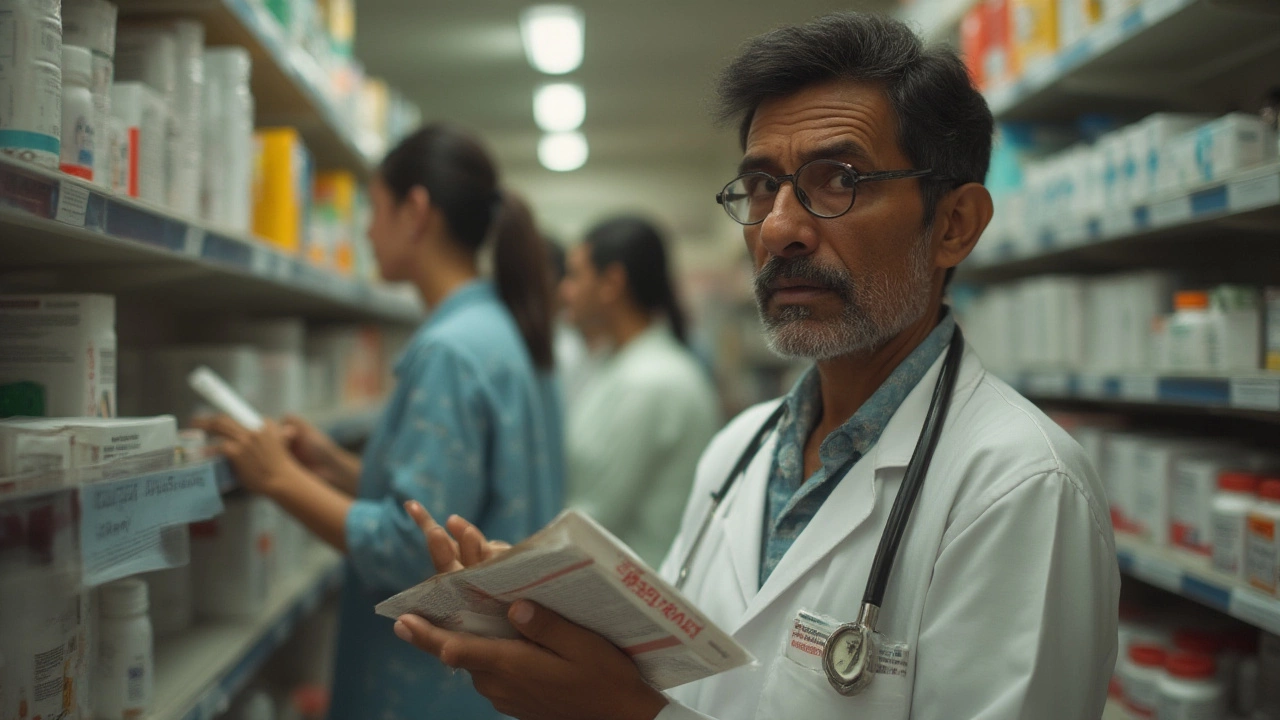Imagine waking up and realizing the world’s most prescribed diabetes medication—the one that millions trust every morning—might suddenly disappear from pharmacy shelves. That’s the jolt many people got when they heard about metformin recalls and discontinuations. For the past few years, health authorities have been making some pretty big decisions about this familiar drug. Why? Concerns have come up about chemical impurities and safety. Thousands of people in India, the US, and around the globe are left wondering—what changed with the very pill that gave so many their food freedom and peace of mind? The answers are more complicated than most headlines lead you to believe.
What Led to Metformin Discontinuation?
Metformin isn’t some new wonder drug. It’s been around since the 1950s, and doctors everywhere prescribe it for type 2 diabetes because it’s effective, safe for most, and pretty affordable. According to a Lancet diabetes study in 2023, over 120 million prescriptions for metformin were filled in India and the US combined. So, why cut off a medicine so deeply woven into everyday life?
The trouble really started in 2020, when labs in Singapore, and later in the US, found a contaminant called NDMA (N-Nitrosodimethylamine) in some metformin batches. This isn’t just some minor impurity. NDMA can build up over time and, above certain levels, is considered a probable human carcinogen. Now, before panic sets in, NDMA is everywhere—in cured meats, grilled foods, even some drinking water—but medicines are supposed to keep things as safe as possible.
Different national drug regulators, including the US Food and Drug Administration (FDA), Health Canada, and India’s Central Drugs Standard Control Organization (CDSCO), started checking metformin from various producers. The results? Not every batch or brand had high NDMA, but enough did that it raised eyebrows. In May 2020, some extended-release versions of metformin were recalled in the US. In India, drug inspectors issued notices to a handful of manufacturers and asked for more testing. But the drama didn’t end with recalls. Some pharma companies simply stopped producing or shipping their metformin stock, needing time to figure out if their manufacturing practices were at fault.
By 2024, a few pharmaceutical brands quietly discontinued some metformin formulations, while others reformulated or improved testing. But the impact stuck. People started worrying—was it still safe to take? Doctors everywhere fielded anxious calls as rumors spread faster than any prescription could fill. The NDMA story wasn’t a one-off recall; it was a reminder of how delicate pharmaceutical quality control can be, especially with medicines that millions depend on daily.
Here’s a peek at the numbers from the Indian pharmaceutical market and US monitoring (latest data compiled in 2024):
| Country | Metformin Prescriptions (2023) | Recalls (2023–2024) | % of Affected Brands |
|---|---|---|---|
| India | 67 million | 9 | 7% |
| United States | 56 million | 13 | 8% |
| Canada | 7 million | 4 | 6% |
Not every patient had their medication discontinued, but a significant number saw brand switches, shortages, or direct advice to stop their current tablets until new versions were released. Something as basic as NDMA pushed healthcare systems worldwide to rethink how drugs are tested and sourced.
What Exactly Was Wrong With Some Metformin?
NDMA is not something you want in your medicine. The World Health Organization and International Agency for Research on Cancer both list it as a probably carcinogenic substance—it might raise cancer risk, especially after long-term exposure. What’s surprising is that NDMA contamination was a new problem for metformin. It didn’t show up in earlier tests across decades of use.
So what changed? Experts think newer manufacturing processes, certain raw materials, or even how the tablets are stored in humid climates could be to blame. Some companies started using cheaper ingredients or outsourced parts of the supply chain after the huge surge in metformin demand when guidelines started favoring early diabetes screening. With so many players involved, from factory to pharmacy, one weak link can spoil the whole batch. Even in the best labs, a minor chemical reaction can quietly create tiny amounts of NDMA if conditions aren’t controlled just right.
Another unexpected twist—extended-release (ER or XR) forms were more likely to have contaminants than the older, immediate-release versions. The coatings and the way the tablet breaks down can affect NDMA risk. Batch testing showed that immediate-release metformin almost never had NDMA above the safe level (96 nanograms per day, set by the US FDA), but several ER batches did. This made India’s and the US’s recalls hit mainly brands sold as ‘long-acting’ or ‘24-hour’ control.
This problem is tricky because once the word gets out, people stop trusting even safe batches. Pharmacies reported sharp dips in metformin sales, while doctors told patients it’s safe unless contacted directly. But fear sticks around. No one wants to take needless risks, especially with a chronic condition like diabetes that needs steady, reliable medication.
Behind the headlines, most regular metformin tablets remained untouched by the NDMA scare. But the process opened eyes to just how fragile drug safety rules can be—and how fast a global supply chain can shift from hero to headache with a single contaminant found in one city’s lab.

How Does This Affect People With Diabetes?
Imagine balancing blood sugar for years with metformin, only to hear you might have to stop cold turkey. That’s a real stressor for both patients and doctors. Metformin is the first medicine most people with type 2 diabetes get—every diabetes guideline from the Indian Council of Medical Research, American Diabetes Association, and UK’s NICE puts metformin up front because it lowers blood sugar, helps with weight management, and has a low risk of severe hypoglycemia (the dreaded sudden sugar crash).
When metformin is pulled from shelves, even if only certain brands or versions, pharmacies face shortages and prescription chaos. Some patients end up on a waitlist, while others scramble to find generic versions from less familiar companies. There’s also the cost factor. Metformin is cheap—usually just a few rupees or cents per day. The alternatives? Some cost 10 to 20 times more, often unaffordable for the average family in India or even those without strong insurance in the West.
The anxiety spreads beyond just supply. Many feel betrayed by a system that pushed metformin as the gold standard for decades. Stories in Indian newspapers showed that some switched medicines without clear instructions, risking both low and high sugar swings. Doctors caution not to panic—switching medicines must be done with close blood sugar monitoring, never just by skipping a dose. Some people, desperate, started hoarding old pills, adding more stress to pharmacies and possibly ingesting expired tablets.
Still, not all news is bleak. Most government and private hospitals in Bangalore—and across India—managed to sort out supplies after a short disruption. Major teaching hospitals offered blood NDMA screening for worried patients, though most showed levels well below concern, even if their tablets were from recalled batches.
Here’s a tip for anyone stuck in this mess: check your medicine label, talk to your pharmacist, and contact your doctor immediately if your batch is mentioned in any safety update. Don’t stop taking metformin unless told directly—it’s sometimes safer to switch brands within metformin, rather than swapping to something entirely different. And keep your blood sugar diary—this helps your doctor spot sudden swings if you do need a new prescription.
What Are the Alternatives If Your Metformin Is Discontinued?
The moment a medicine as common as metformin gets discontinued, everybody’s hunt for ‘the next best thing’ begins. The truth is, there’s no universal swap. Doctors usually tailor diabetes treatment, based on each patient’s readings, risk factors, and what’s available near them. But here’s a breakdown of the most common replacements and how they stack up in real-world Bengaluru clinics:
- Sulfonylureas (like glimepiride or gliclazide): Old-school, cheap, and effective, but higher risk of hypoglycemia and possible weight gain.
- DPP-4 inhibitors (like sitagliptin or vildagliptin): Lower risk of sugar lows, but more costly. Usually combined with other drugs for better effect.
- SGLT2 inhibitors (like empagliflozin or dapagliflozin): Proven heart and kidney benefits, but expensive and not suitable if you have certain infections or low kidney function.
- Insulin: Reliable but usually a last resort for those starting treatment or with moderate diabetes, due to injection fatigue and cost.
- GLP-1 receptor agonists: Help with weight loss too, but are pricey and come as injections—not ideal unless needed.
But there’s no need to panic if you simply switch to another metformin brand, as long as it isn’t in a recalled batch. In fact, many small Indian pharma companies have stepped up testing and quality control after the NDMA news, so choices on the shelf actually went up in 2025 as large brands paused and smaller ones filled gaps.
Still, lifestyle matters as much as meds, if not more. Even if your tablet brand changes, keep up a steady exercise routine, manage portion sizes, and track your glucose. Many Bengaluru clinics now offer telemedicine check-ins to help people adjust to medication changes from home—a tip worth trying if you’re stuck waiting for an appointment. Plus, more pharmacies offer real-time updates on which metformin brands are currently available and tested safe—just ask for the most recent list.
If you’re considering herbal supplements or Ayurveda alternatives (common in India), double-check with a certified doctor. Some herbal remedies interact with standard medicines or can change blood sugar unpredictably. No need to gamble with your health when proper help is a message or call away.
Metformin’s recall story is a wake-up call for both the industry and patients. We might see stricter rules for quality control, better tracking of medicines from factory to pharmacy, and, hopefully, faster public alerts when problems do pop up. Keep an ear out, stay informed, and never hesitate to double-check what’s in your tablet strip—your daily pill is only as good as the trust and testing behind it.






